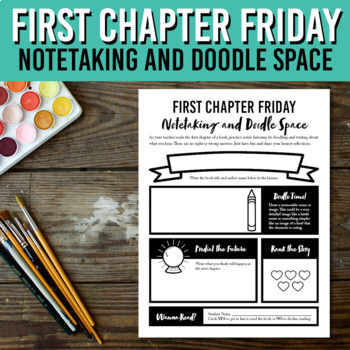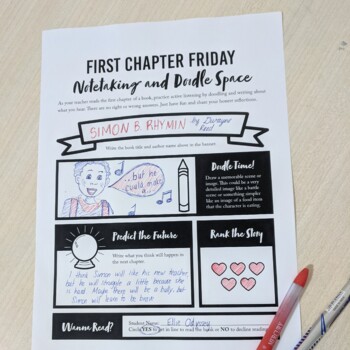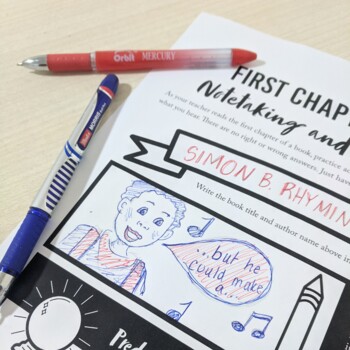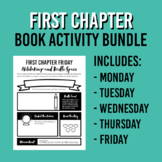First Chapter Friday Doodle and Notetaking Printable | Sketchnoting Template
- PDF
What educators are saying
Also included in
- Are you looking for fun ways to build students' excitement about reading? This bundle of 5 printable worksheets allows students to practice active listening by doodling and writing about what they hear as you read the first chapter in a book.Each worksheet template includes:A banner for students toPrice $5.40Original Price $6.00Save $0.60
Description
Build student excitement about reading with our interactive First Chapter Friday activity printable! Our 8.5 x 11 in worksheet is a fun and engaging way to practice active listening while hearing the first chapter of any book.
This activity includes a banner for students to write the book title and author's name, a space for students to doodle a memorable scene or image, and a section for students to write notes about what they predict will happen next in the novel. Additionally, there are 5 fill-in hearts for students to rank the quality of the writing, and a reading sign-up section for students to express interest in checking out the book from the library.
Our First Chapter Friday template is an excellent resource for teachers and parents looking to encourage reading and active learning in students.
This print-and-go activity includes:
- A banner for students to write the book title and author's name
- A space for students to doodle a memorable scene or image
- A section for students to write notes about what they predict will happen next in the novel
- 5 fill-in hearts for students to rank the quality of the writing
- A reading sign-up section for students to share if they'd like to check out the book from the library
Want to do this same activity on a different day? Check out...
What teachers are saying...
❤ "This was a great way of engaging my students for First Chapter Friday."
❤ "This was great for First Chapter Friday and keeps the students accountable for actively listening to the chapter being read."
Customer Tips:
Would you like to earn TPT credit that you can use on future purchases?
- Once you're done using this product, please visit the My Purchases webpage. There will be a Provide Feedback button next to each purchase listing. When you click on that button, you'll be redirected to a page where you can select a rating and write feedback.
- Whenever you give feedback, you'll receive credits that will decrease the costs of your future purchases.
- Your feedback matters to me. I love learning about how my products are being used in classrooms around the world, and your insights help me edit products to make them stronger.
Let's be friends! Follow Creating2Learn on TPT by clicking on this link. You'll receive notifications about new products and sales. Sign up for my email newsletter for updates on blog posts and other teaching resources.






